-
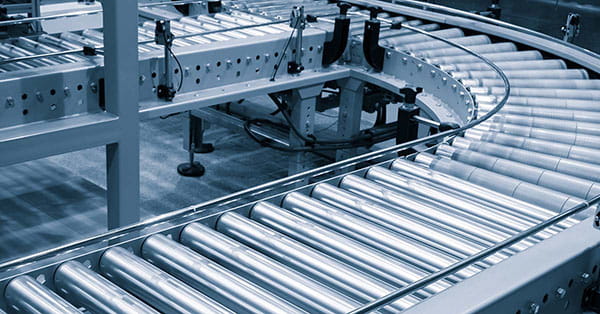
Atlanta Conveyor Systems
Carolina Handling sells, installs and maintains conveyor systems and handling equipment in Georgia and across the Southeast. Our automation specialists can help you find the perfect solution from world class AS/RS manufacturers like Modula.
Georgia Conveyor Systems Supplier
Conveyors and automated storage and retrieval systems can increase the efficiency of your storage operations, improve safety practices and meaningfully reduce labor expenses.
Conveyors can move both individual cartons and entire pallets throughout your warehouse, and they are an essential piece of modern material handling design.
Conveyor systems fall into three different categories for almost all material handling operations:
- Powered roller or belt conveyors (for carton handling)
- Powered chain or roller systems (for pallet handling)
- Non-powered conveyor systems
Powered Package Handling Roller or Belt Conveyors
Powered roller or belt conveyor systems are generally used for less bulky pieces like packages and cartons.
Belt systems are mostly used for moving products along a line, while roller conveyors are employed for collecting packages in specific areas along the line.
Belt Conveyors
Invented more than a century ago, conveyor belts are an indispensable piece of many material handling systems. Lower cost than roller options and oftentimes better suited to certain functions like advancing lightweight products, belt conveyors are used in many material handling layouts.
Belt systems utilize a long, looped belt that rides a series of non-powered rollers on a metal substructure called a slider belt. Motor-driven pulleys turn the belt and move items down the conveyor line.
Belts can be made of an assortment of materials and surfaces depending on the function and nature of the conveyor. For example, a conveyor belt surface could be perfectly smooth in portions where items need to be pushed off the line and may have a gripping surface on segments where goods have to be transported up inclines.
Roller Conveyors
Although belt conveyors are time-tested workhorses, newer roller conveyors offer a number of advantages in many modern material handling uses.
Most importantly, roller conveyors can allow for accumulation of items on the line where belt configurations cannot. This is an important contrast because there are innumerable scenarios where products must hold and accumulate in material handling designs. Accumulation is often necessary when items must be temporarily halted before being forwarded to automated palletizers or sorters.
Some roller conveyor systems also have the capability to supervise products on the line and apply zero pressure accumulation, meaning none of the accumulating objects directly touch as they slow down and finally stop.
Roller systems feature a series of cylinder rollers that are generally set up in one of these ways:
- Line shaft conveyors: In a line shaft conveyor, a long tubular shaft runs underneath the cylinders at a right angle to them and is attached to each roller with flexible O-rings. A drive mechanism turns the shaft and, accordingly, drives the cylinders by way of the connected O-rings. Line shaft systems are the least costly of all roller setups, but they can also demand the most repair because the O-ring connectors between the rollers and the shaft tend to need adjustment and sometimes fail.
- Belt-driven roller conveyors: As you would surmise from the name, belt-driven roller conveyors are driven by a belt mechanism that sits beneath the roller platform. A motor drives the belt, which advances the cylinders.
- MDR conveyors: Motorized roller conveyors, often referred to as motor-driven roller (MDR) systems, are configured in segments where one cylinder from each segment is powered by its own motor. That one motor-driven cylinder is connected to the adjacent rollers in that section by way of flexible O-rings, and therefore powers all the rollers in the section. Powered units are placed in succession to create the conveyor line.
MDR systems are known for their energy efficiency because: a.) They typically run on 24-volt DC motors and b.) These motors can be configured to run only when an object is present on the cylinders, meaning they are inactive most of the time.
Although the cost of MDR conveyors is higher than line shaft and belt drive systems, electricity costs and service costs are typically much lower than the other options mentioned. - Segmented belt conveyor: The concept of motor-driven roller conveyors ultimately begat the birth of segmented belt conveyors. Similar to motor-driven roller systems, segmented belts function as discrete independent units and offer several of the same benefits of motor-driven rollers, including accumulation capacity.
Powered Pallet Handling Conveyors
Powered pallet handling conveyors are frequently used with palletizers and automatic storage and retrieval systems. Pallet handling conveyors can usually accommodate loads of up to two tons and run at a far slower pace than carton handling systems, sometimes at speeds as low as four pallets per minute.
Pallet handling conveyors come in two types: roller conveyors and chain conveyors.
- Pallet handling chain conveyor: Perhaps the most rudimentary of all conveyor methods, pallets on a chain conveyor line sit directly on two or more lengths of heavy-duty chain. Motors propel the chain segments, which in turn move the pallets down the line.
- Pallet handling roller conveyor: Somewhat like motor-driven roller systems, pallet handling roller configurations use large cylinders and heavy-duty chains to link the motorized cylinder to the remaining cylinders in a conveyor segment.
Non-Powered Conveyors
Skatewheel or roller conveyors are the conventional types of non-powered conveyors used in typical warehouse operations. These types of systems use gravity or inertia to advance smaller loads though pick modules, warehouses, workstations, automated sorters, loading docks and package-sorting areas.
Skatewheel systems are made up of numerous separate wheels and require minimal power to sustain the inertia of products as they progress along a conveyor line. In general, they propel items quicker than non-powered roller conveyors, and they have more flexibility when it comes to setup. Because they’re separate wheels instead of a belt, they may be applied in curved segments of a conveyor arrangement.
In general, non-powered roller systems are less costly than skatewheel conveyor systems. They are frequently utilized for workstations, pick modules and other sectors where it’s beneficial to have a flat platform to work on. Roller systems may also be utilized to slow products down that originate from faster moving mechanisms like sorters so that human laborers can keep pace with conveyor output.
Non-powered skatewheel and roller systems have a serious handicap as compared with powered conveyors: By employing inertia and gravity to move items, you can’t regulate the force applied to those items. Simply put, you don’t have control of the inertia and speed of products on your line.
Conveyor Companies Near Me
If you’d like a full analysis of conveyor system possibilities for your storage facility, DC or other material handling operation, contact a professional at Carolina Handling.
-
-
Proudly serving
Atlanta, Columbus, Macon,
Athens, South Fulton, Sandy Springs,
Roswell, Johns Creek, Warner Robins,
Alpharetta, Albany, Marietta,
Stonecrest, Brookhaven, Smyrna,
Valdosta, Dunwoody, Gainesville,
Newnan, Peachtree Corners,
Milton, Mableton, Peachtree City,
East Point, Douglasville
and the entire State of Georgia.
You May Also Like:
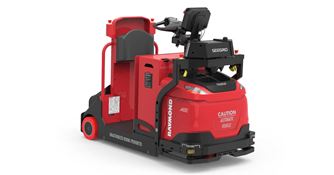
Autonomous Guided Vehicle (AGV) - Atlanta
Carolina Handling sells and services autonomous guided vehicles (AGVs) in Atlanta and throughout the State of Georgia.
Learn More
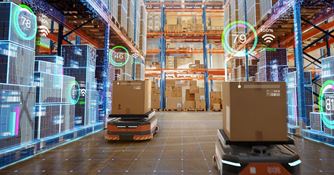
Autonomous Mobile Robot (AMR) - Atlanta
Carolina Handling sells and services Autonomous Mobile Robots (AMRs) in Atlanta and throughout the State of Georgia.
Learn More
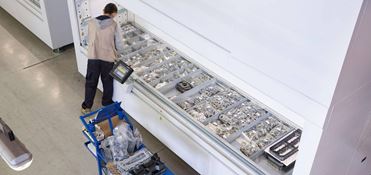
Vertical Lift Module - Atlanta
Carolina Handling sells and services Vertical Lift Module (VLM) systems in Atlanta and throughout the State of Georgia.
Learn More
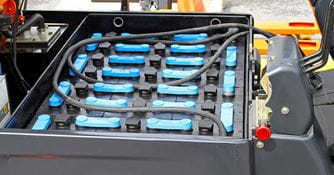
Forklift Battery - Atlanta
Carolina Handling sells and services forklift batteries in Atlanta and throughout the State of Georgia.
Learn More

Forklift Service - Atlanta
Carolina Handling sells and services forklifts in Atlanta and throughout the State of Georgia.
Learn More


